Chinese workers fleeing Foxconn highlights China's zero-Covid dilemma

When video clips of people carrying their belongings and trudging along as if on a long journey surfaced on China's social media, many people were caught in disbelief that this was not some outdoor experiential event or performance art, but a real-life "pandemic escape" in Zhengzhou, Henan province.
Despite its firm hold on the "dynamic zero" Covid-19 policy, China has recently seen outbreaks in several cities, including Zhengzhou. Official figures on 29 October reported only six locally transmitted Covid-19 cases and 26 new asymptomatic cases in the city, while the number of cases in the Foxconn factory was not disclosed.
However, people realised that the outbreak might be more severe than official reports when on 29 October, an online video showed workers from Foxconn - the world's largest iPhone factory and the largest factory in Zhengzhou - leaving for their hometowns on foot.
On 1 November, Henan governor Wang Kai inspected Foxconn's production and living areas. The official report of total cases jumped to 359 for that day, up more than threefold from the day before. On 2 November, the authorities locked down the zone around Foxconn, announcing that "static management" measures would be in place for a week until 9 November.

On 30 October, Zhengzhou authorities posted on their official Weibo account saying, "This wave is more contagious but the viral load is lower. So far, the outbreak is under control with no severe cases in the Foxconn factory."
While the Zhengzhou authorities tried to calm public nerves, netizens were not convinced. They searched for clues of an outbreak in photos and video footage shared online, as well as we-media news reports, including one claiming that "over 20,000 Foxconn workers have tested positive" despite authorities denying its claims.
Netizens asked, "No figures are reported, but the escape is real. So, how can we believe you?"
Why did the workers have to 'escape'?
Notwithstanding the authorities' blanket statement, one can piece together a rough timeline of the Foxconn outbreak from the online posts by netizens claiming to be Foxconn workers, as well as interviews and reports on we-media.
In the early hours of 29 October, a netizen claiming to be an employee of Foxconn Zhengzhou shared that there were early signs of an outbreak on 8 October, but it gained little attention. They only realised that there was an outbreak when a closed-loop management system was suddenly enforced in the factory on 14 October.
The post said that positive cases and close contacts were initially taken away and quarantined, but as cases kept rising and there was no more space, the close contacts were quarantined in the hostels. In the later stages, close contacts who tested normal were allowed to continue working as usual.
The netizen added, "I saw more and more workers testing positive and being taken away, and the number of close contacts were growing too. Everyone was at least a second-degree close contact."
Dining-in was halted on 19 October, and packed meals were distributed for workers to take back to their hostels. But as the closed-loop management went on and cases went up, logistical issues emerged, with many workers claiming that they were given rotten food, or only had bread and instant noodles to eat.
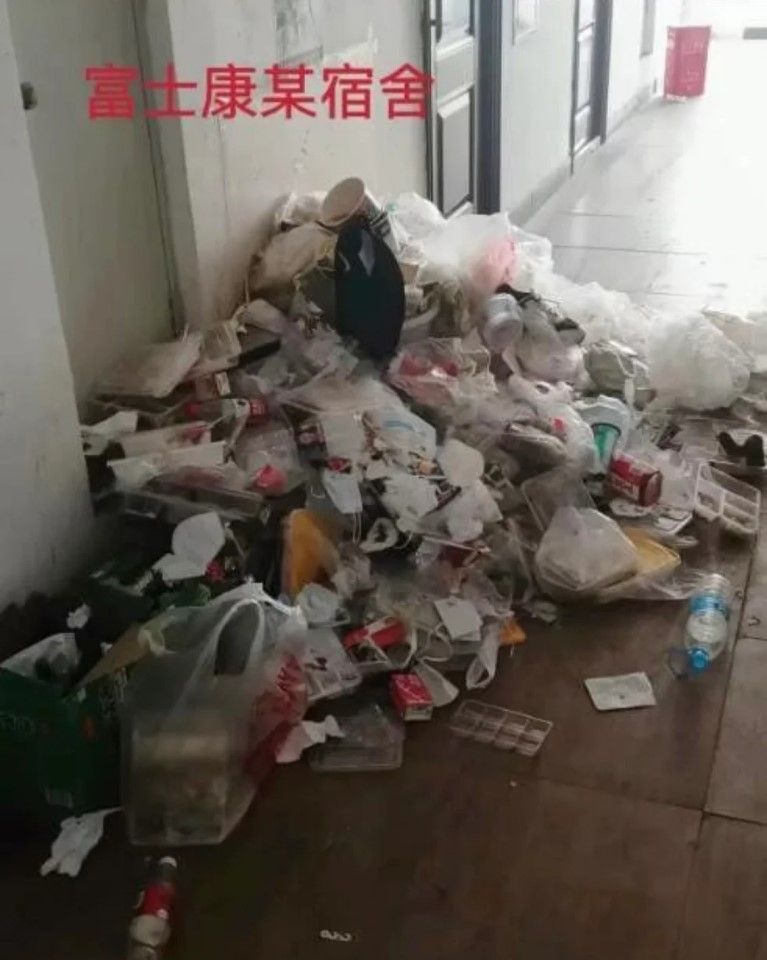
Online photos also showed garbage piled up along the streets and hostel corridors.
The post said, "We really want a normal life. We don't want to be unstrung and upset all day. We just want to have a normal meal and sleep mask-free, see the outside world and go back to the good life."
Reportedly, the factory will resume dining-in and stop individual testing from this week despite rising cases. For the workers who have experienced the control measures that went from strict to chaotic, and watched their colleagues around them get infected, such news does not give peace of mind, but incites greater panic instead.
Kindness from strangers amid calamity
Amid the expected panic, some workers chose to leave the Foxconn factory - though it is unknown whether they forced their way out, or the company could no longer control the situation and had to quietly let them go.
Most of those who chose to leave were local part-timers or from nearby towns. Clearly, the unstable, tough job was not worth the risk of an infection.
Upon learning about the workers' journey, many residents nearby put out drinks and snacks, and wished them a safe return with signs saying "Supplies for Foxconn workers returning home" and "Free for Foxconn workers".
But without a valid test result, many of the workers had abnormal health statuses. And with some areas in Zhengzhou under static management, they could not take public transport and had to leave Foxconn on foot.
The online videos and workers' comments revealed that most workers chose to leave Foxconn through quiet expressways and fields, to avoid potentially spreading the virus to people along the way.
Upon learning about the workers' journey, many residents nearby put out drinks and snacks, and wished them a safe return with signs saying "Supplies for Foxconn workers returning home" and "Free for Foxconn workers". Netizens were moved by the sincere gesture of ordinary people.
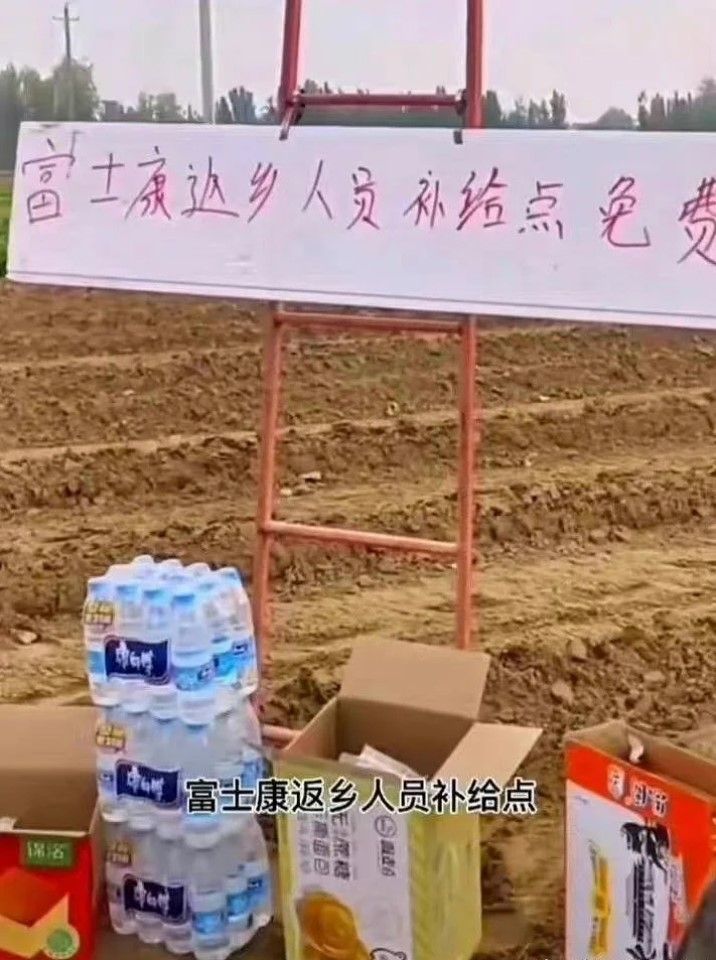
The hordes of workers returning home have also drawn the attention of their hometowns. Yicai.com reported that as of the evening of 29 October, various cities and counties in Henan province such as Yuzhou, Changge, Qinyang, Weidu district in Xuchang, and Xihua, have issued open letters, saying that they were prepared for Foxconn workers with a local huji (户籍) or household registration to return home. All regions said that the returnees should report in advance and adhere to the point-to-point services and quarantine measures.
Subsequently, on 30 October, Foxconn issued three notices to its workers, making arrangements for those willing to stay as well as those who want to leave, including improving workers' living and working conditions, and arranging transport for those who wish to return home, thus putting an end to the shocking "pandemic escape".
For the Chinese public, the scenes of escape are shocking and incredulous, making it hard to believe that it's happening in today's China. The incident naturally gained widespread attention, with the open letters becoming the top search on Weibo on the afternoon of 30 October.
... others were worried that these workers would spread the virus to nearby villages and their hometowns, resulting in a larger outbreak.

However, not everyone felt the same way: while some netizens were empathetic towards the workers who fled to their hometowns and lamented the tough times in life; others were worried that these workers would spread the virus to nearby villages and their hometowns, resulting in a larger outbreak.
Choosing between production and daily life
In fact, Foxconn's Covid-19 outbreak escalated mainly because of the long-standing dilemma between economic production and anti-epidemic measures.
As a pillar enterprise of Zhengzhou and even Henan, Foxconn employs about 200,000 people out of Zhengzhou's metro area population of 6 million. The city may not be able to withstand the impact of suspended production as compared with other infected regions.
According to data from China Shippers' Association, Foxconn's Zhengzhou plant became China's largest foreign trade exporter in 2019 with a total export value of US$31.6 billion. In the same year, Foxconn accounted for nearly 82% of Zhengzhou's total import and export volume of 413 billion RMB, as well as 65% of Henan's total import and export volume.
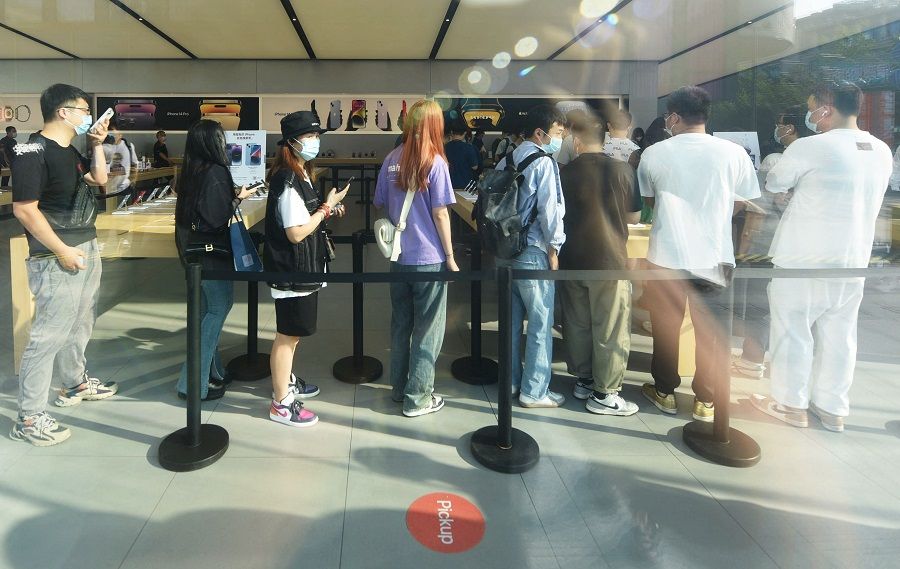
The New York Times reported that Foxconn's Zhengzhou plant is a "central artery" in Apple's production of the iPhone, producing roughly half of Apple's global supply, not to mention the fact that the period ahead of the year-end holiday season is a critical time for iPhone sales.
One can imagine that Foxconn did not immediately order all its workers to undergo quarantine and suspend production because it wanted to maintain a balance between production and epidemic containment.
After a Covid-19 outbreak was discovered in the plant, Foxconn said that production and operations were "relatively stable", and that output estimates for the three-month period from October to December would "remain unchanged".
It is more difficult for enterprises to walk a tightrope between maintaining production and ensuring dynamic zero-Covid than to completely shut down their plant. If the right balance is not found, the situation can easily turn messy.
One can imagine that Foxconn did not immediately order all its workers to undergo quarantine and suspend production because it wanted to maintain a balance between production and epidemic containment. But when Covid-19 cases soared to an uncontrollable scale, the relatively lenient policy caused a state of confusion among the workers, leading to chaos.
Even now, the outside world is concerned about the two-fold consequences of Foxconn's worker exodus: some people are worried that Foxconn's virus outbreak will spillover to other regions, while others are concerned about Apple's iPhone 14 production.
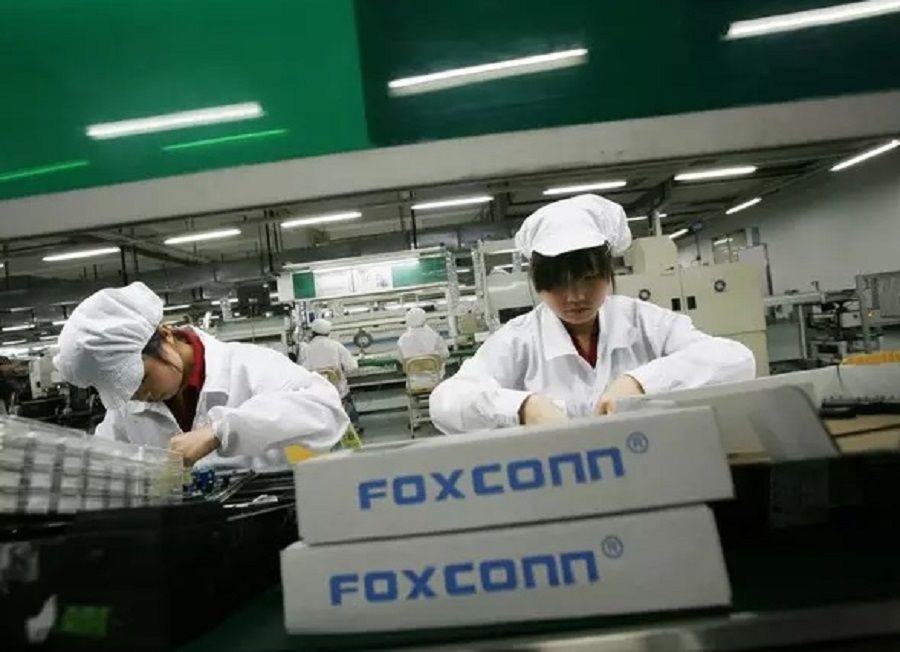
Foxconn told Henan Daily in an interview that with the guidance and support of the local government, its Zhengzhou plant will strive to achieve both production and epidemic prevention, while doing its best to organise production in the plant's epidemic-free workshop under the premise of ensuring safety.
A source familiar with the matter told Reuters that iPhone production at the plant could drop by as much as 30% in November as a result of the anti-Covid measures, but Foxconn is working to boost production at its Shenzhen factory to make up for the shortfall.
Controllable epidemic, uncontrollable public frustration
Not only has Foxconn's messy epidemic prevention and control efforts come under criticism, Henan and Zhengzhou authorities have also become the target of attacks.
Although the local government had sent a working group to Foxconn to assist in epidemic prevention and control work on 30 October, angry netizens still questioned the local government's delayed response.
At the same time, several Zhengzhou residents near Foxconn's plant took to the internet to reflect that many areas around the factory were locked down, and such heavy-handed measures seem to be inconsistent with the few Covid-19 cases reported, bringing into question the credibility of Zhengzhou authorities once again.
Chinese commentator Ming Jinwei (明金维) on 30 October published an article on his official WeChat account calling for the disclosure of information to restore the people's trust and confidence in the local government's anti-Covid fight.
He wrote, "If rumours were left to spread, it would not only result in misinformation but also confusion, which is detrimental to fighting Covid-19."

He also added that Zhengzhou has experienced several "public opinion storms" over the past few years, such as the deliberate underreporting of massive floods, the rural bank scam and the red health code saga, which have dealt massive blows to the credibility and image of the Zhengzhou and even Henan government.
On 30 October, former Global Times editor-in-chief Hu Xijin highlighted that mainstream media in Zhengzhou were barred from speaking out, which added to the confusion.
On 31 October, he again emphasised the importance of Foxconn to Zhengzhou and urged both parties to be open and transparent in future epidemic prevention and control efforts to prevent rumours from shaking public confidence and causing unnecessary panic.
He added that this incident could help establish a more scientific and rational understanding of the pandemic and anti-Covid measures among the public, lessen the younger generation's excessive fear of Covid-19, and alleviate discrimination against those infected with the coronavirus.
Undoubtedly, the Foxconn plant, which has a workforce comparable to the size of a small county but with much higher density, can serve as a case study for future epidemic prevention and control policies.
Future of China's anti-Covid fight
Through the Foxconn incident, evidently, some people in China believe that the relaxation of control measures, or "lying flat" (躺平), will result in large-scale infections and panic, while others believe that the strict dynamic zero-Covid policy has brought about chaos and frustration in Chinese society.
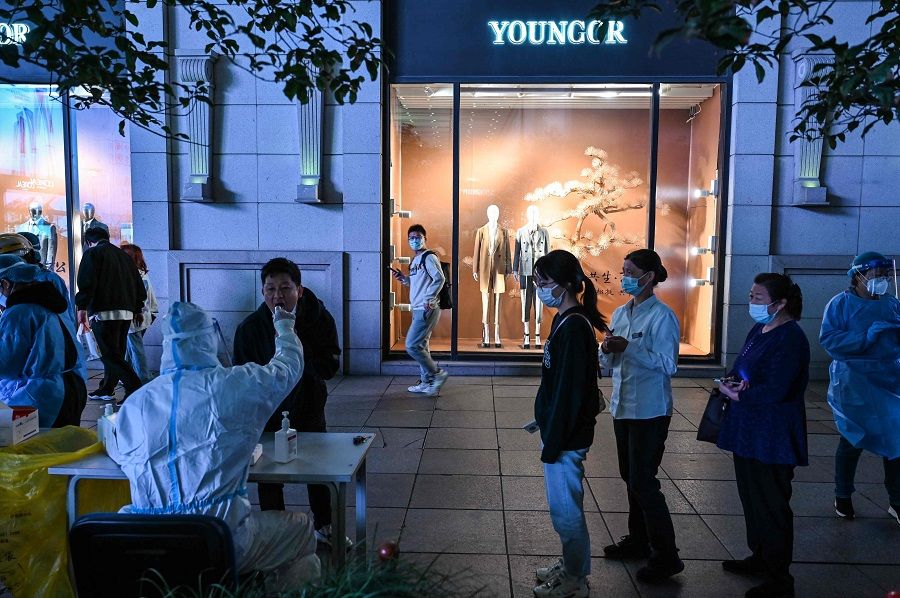
Undoubtedly, the Foxconn plant, which has a workforce comparable to the size of a small county but with much higher density, can serve as a case study for future epidemic prevention and control policies. However, with the current lack of access to information, it is a pity that the two groups of people who either support zero-Covid or the relaxation of measures can only see part of the big picture and are unable to talk sense into each other.
Whichever way forward, the authorities' first step would be to make information open and transparent. Only with ample understanding and rationality, can people avoid descending into such chaotic situations.
This article was first published in Lianhe Zaobao as "下午察:富士康"大逃疫"".
Related: CCP new leadership team's big task: Build market confidence amid zero-Covid | Beijing faces a huge deficit of trust after 20th Party Congress | When will China end its zero-Covid policy and open up its borders? | China's exorbitant cost of zero-Covid | Where will the zero-Covid policy and Xi's third term lead China?
